This post describes a set of over 20 papers with mostly image problems from the Department of Pharmacology at the School of Medicine of Zhejiang University in Hangzhou, China. All papers have Professor Ximei Wu as the common – and often corresponding – author. The Wu lab conducts research on stem cell and bone development, and their papers contain many images of Western blots and immunohistochemistry experiments.
A paper retracted for synonymized plagiarism
My search started when I noticed a recent retraction at Frontiers in Public Health. A paper, “Revamping of Chronic Respiratory Diseases in Low- and Middle-Income Countries“, was retracted because it showed high similarity to a 2021 paper published in The Lancet. The corresponding authors were Musaddique Hussain and Ximei Wu.
I did a quick PubPeer post-mortem analysis of the two papers. Almost all text from the Frontiers in Public Health paper (submitted in August 2021) was very similar to The Lancet paper’s text (published online in February 2021), with lots of synonymized text. This led to some ‘tortured phrases‘ such as ‘avoidance‘ instead of ‘prevention‘; ‘valid widespread wellbeing inclusion‘ instead of ‘true universal health coverage‘; ‘unrestricted petrol‘ instead of ‘unregulated fuel‘; ‘directions of solutions‘ instead of ‘towards solutions‘; and ‘pollutant peril‘ instead of ‘pollutant exposure‘. Yet, the text structure and topics appeared to be nearly identical. The retraction, therefore, seems to be justified.

Peer reviewers worked at the same university as one of the authors
Not mentioned in the retraction notice, but a big conflict of interest, was that two of the three reviewers of the now-retracted Frontiers paper were affiliated with the Government College University in Faisalabad, Pakistan. That is the same institution as the affiliation of one of the authors, Malik Saadullah. These two people should not have agreed to be reviewers of this manuscript and the journal editors should not have asked them in the first place.
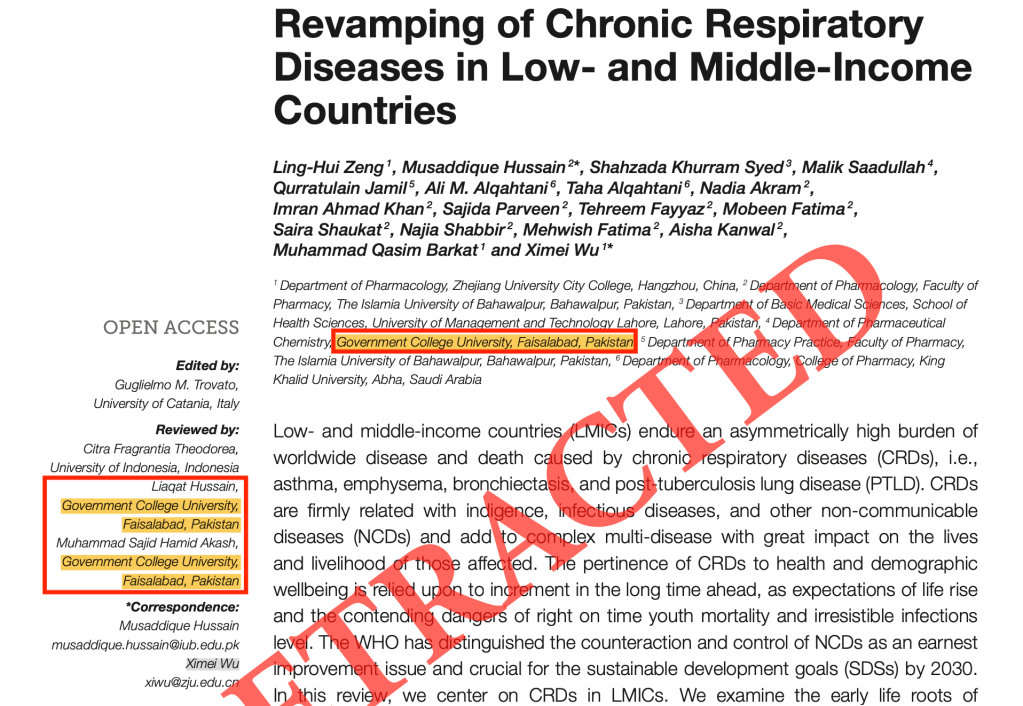
Checking other papers by these researchers
Following these findings, it seemed logical to check other papers from the same authors.
Another paper by first author Ling-Hui Zeng, “Hedgehog Signaling: Linking Embryonic Lung Development and Asthmatic Airway Remodeling” published in MDPI’s Cells, contained a figure that bears a striking resemblance to a figure in another, older paper, although the text appeared original.

I did not find any other cases of plagiarism in papers by Musaddique Hussain or Ximei Wu, but unless the wording is verbatim copied or the synonymized text is very awkward, such cases can be very tricky to find. So I focused on image problems because that is what I have some experience in. And sure enough, there were some problems waiting to be found.
As of today, I have found 18 papers from Professor Ximei Wu with problems. Three additional papers had already been flagged on PubPeer by other users, bringing the total of PubPeer posts on papers by this author to 21.
This is quite an impressive amount, given that Wu authored 55 papers (as per PubMed) during his employment at Zheijiang University.
The papers span a period of over 10 years, from 2012 to 2023. Almost all papers, except for the now-retracted Frontiers in Public Health paper were funded by the National Natural Science Foundation of China, one of the main funders of scientific research in China.
The problems in these papers range from potentially reused loading controls and mirrored blots, to overlapping immunohistochemistry images and duplicated lanes within blots.
Here is a link to the list of papers [PDF]: ximei-wu-papers-on-pubpeer
Blots with problems
Here are some examples of Wu lab papers with blots that appear to represent different experiments:


In some papers, blots might have been mirrored first, and then reused:
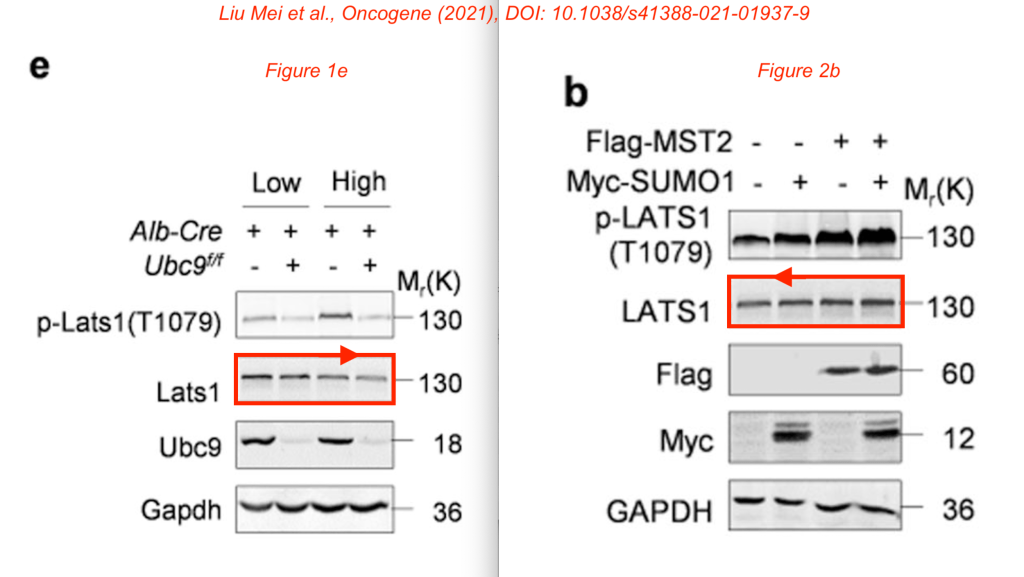

In one paper, lanes within blots appear to have been duplicated.
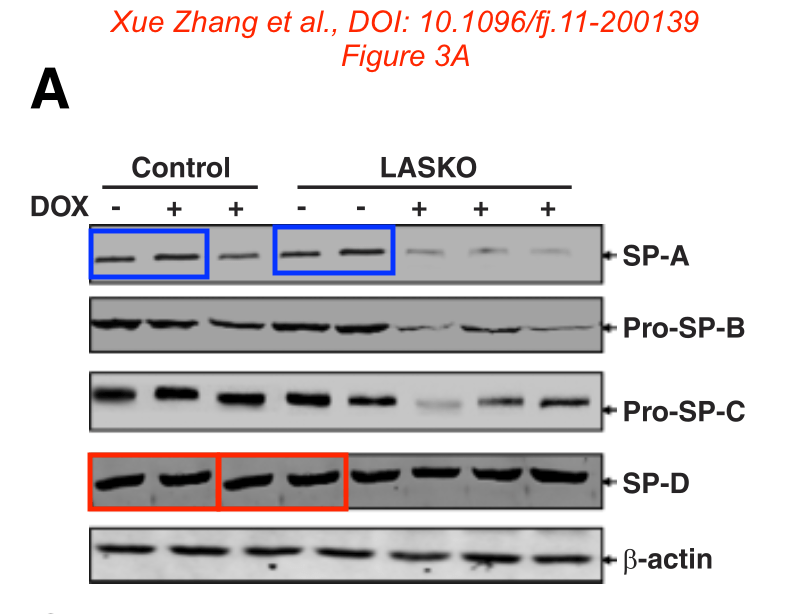
And then there was the blot that appeared in three different papers, albeit in different orientations:
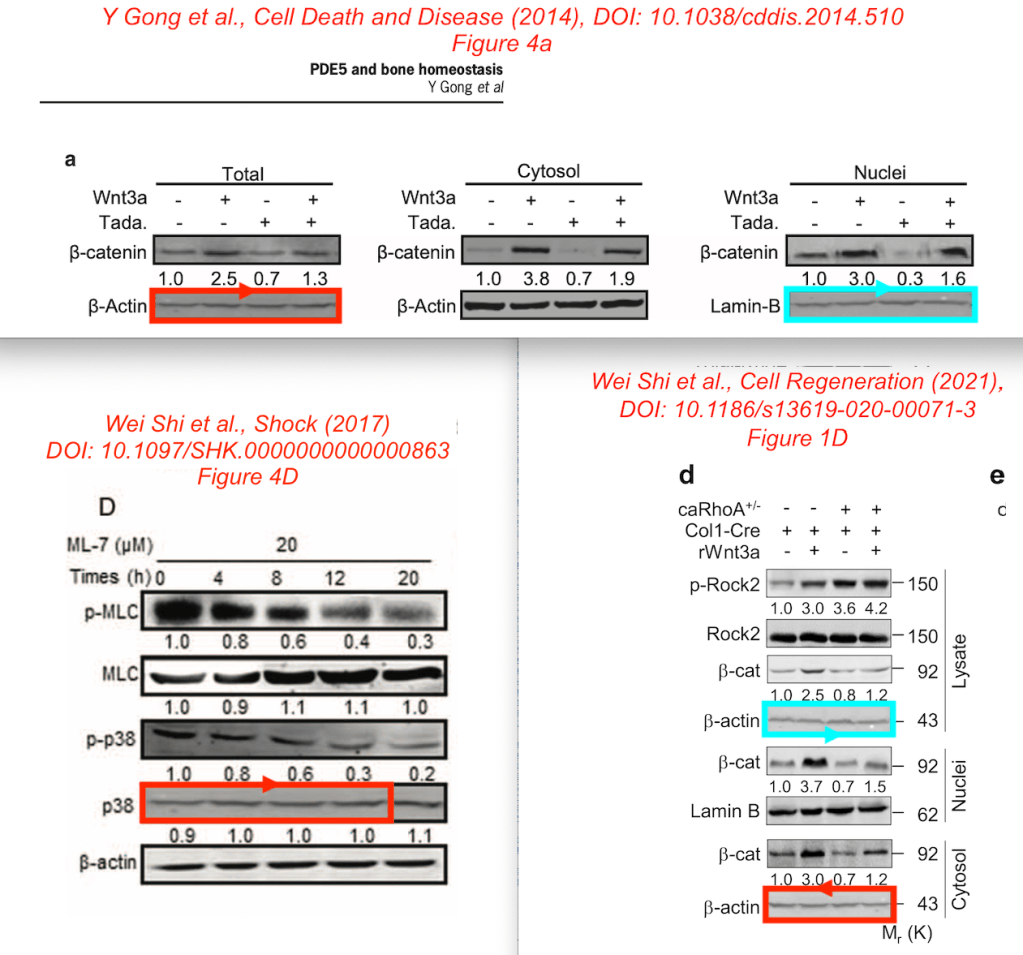
DOI:10.1097/SHK.0000000000000863; Wei Shi et al., Cell Regeneration (2021),
DOI:10.1186/s13619-020-00071-3. See: https://pubpeer.com/publications/5FB8419B5FFBA9FF2E3F56AFA365E1.
Microscopy photo problems
Some of the problematic Wu papers contained potentially overlapping photos of tissues and cells. Examples are shown below.
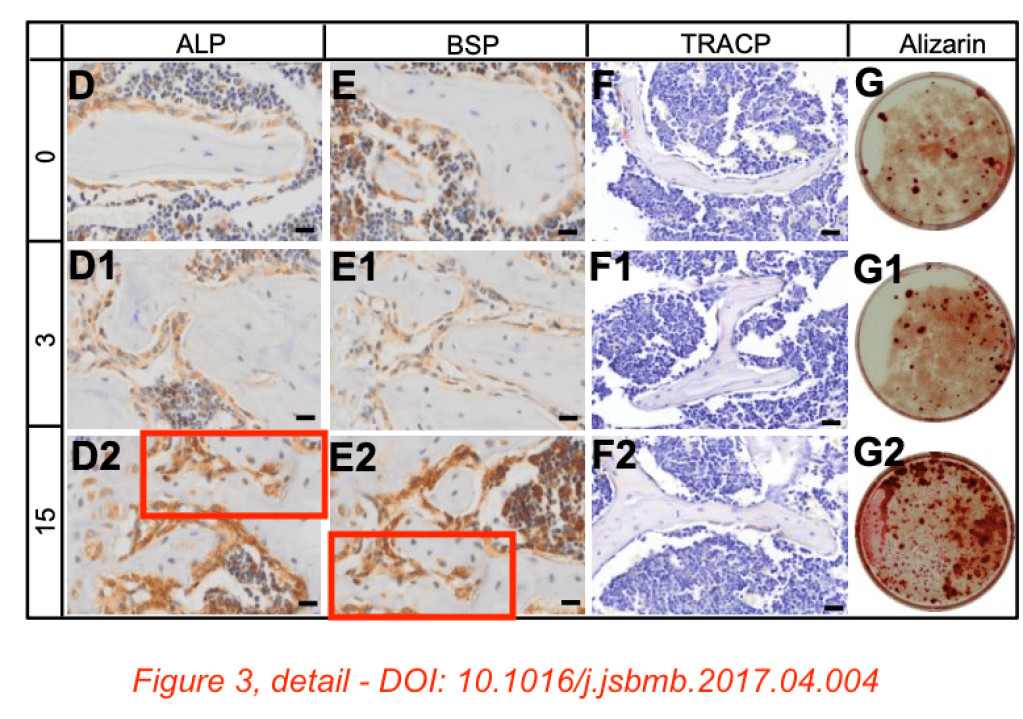
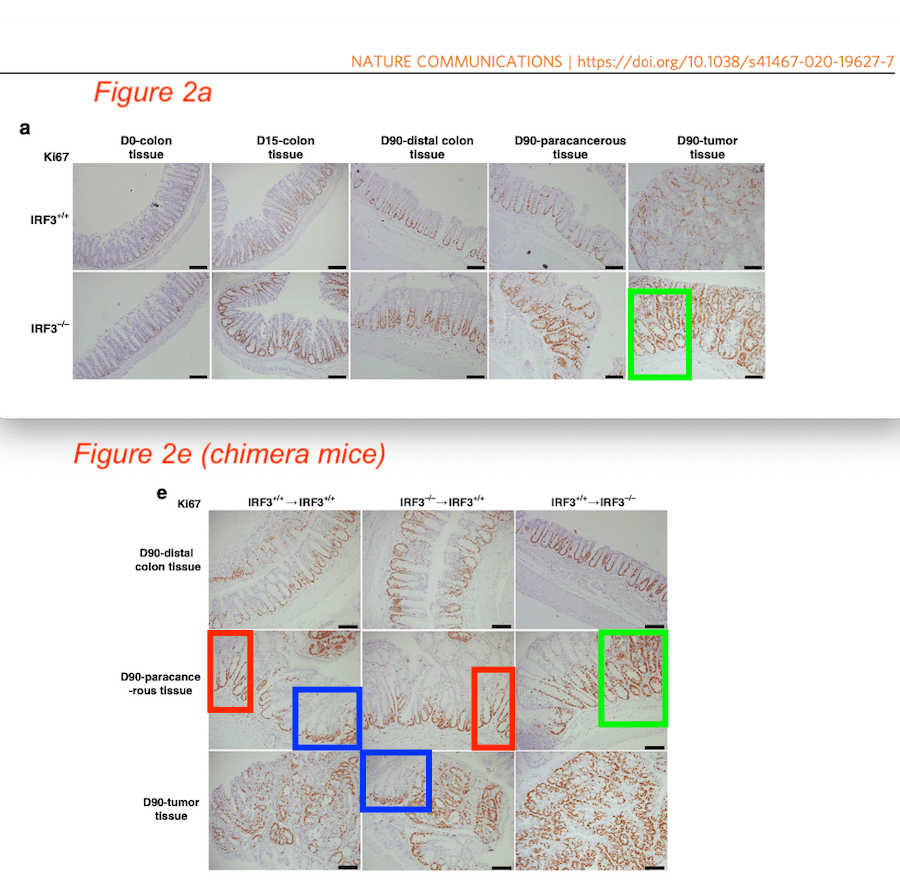
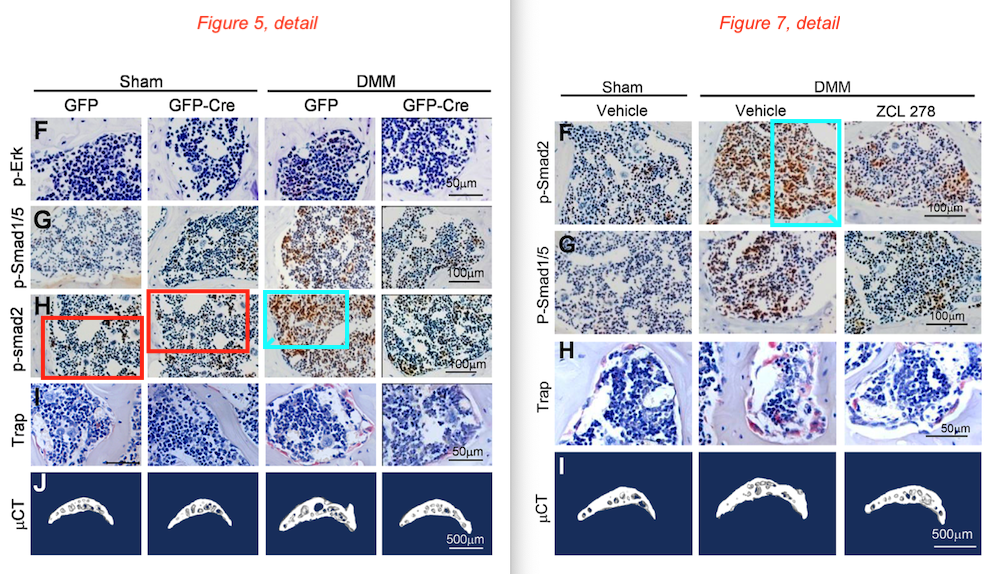

A full list of the papers can be viewed here:

“These two people should not have agreed to be reviewers of this manuscript and the journal editors should not have asked them in the first place.”
Unless Saadullah was added as an author at some late point of the editorial process, that is.
LikeLike